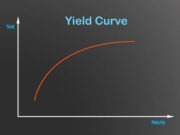
What is a T-account
A T-account is a visual representation of the ledger of a business or individual. It is so named because it looks like the letter T when drawn on a page. The left side of the T-account represents Debits and is typically labeled “left” or “L”. The right side represents Credits and is typically labeled “right” or “R”. In the center of the T is a line that represents the equilibrium where debits equal credits. This line is often labeled “E” for Equilibrium or “0” for Zero.
The purpose of a T-account is to visually represent the flow of transactions and help people to see how debits and credits affect each other. In double-entry accounting, every transaction has a dual impact on at least two different accounts. For example, if a business owner buys office supplies with cash, the Cash account will be debited and the Office Supplies account will be credited. By representing each transaction in a T-account, it is easy to see how these two accounts are affected. In addition, T-accounts can be used to track the balance of an account over time. This can be helpful in spotting trends or identifying areas where further investigation may be needed.
How to create a T-account
A T-account is a graphical representation of a ledger account that shows the debit and credit side of the account as separate columns. The name comes from the T-shaped layout of the account. To create a T-account, start by drawing a horizontal line across a piece of paper. Then, draw a vertical line down the center of the paper to divide it into two equal sections. Label one side “Debits” and the other side “Credits.” When recording transactions, be sure to put each entry in the correct column. For example, if you are recording a purchase made with cash, you would write the amount in the Debit column. On the other hand, if you are recording a payment made by check, you would write the amount in the Credit column. By keeping track of debits and credits in this way, you can easily see how much money is owed or available in an account at any given time.
How to use a T-account
A T-account is a visual representation of a ledger account that allows you to easily see the debit and credit side of the transaction. To use a T-account, simply draw a horizontal line in the middle of a piece of paper, and then label the left side “debit” and the right side “credit.” Then, you can begin recording transactions by writing them on the appropriate side of the line. For example, if you were to make a purchase with cash, you would record the transaction on the debit side. Similarly, if you were to receive payment for services rendered, you would record the transaction on the credit side. By using a T-account, you can quickly and easily see all of the transactions that have been made in an account, making it an valuable tool for both business owners and bookkeepers.
What are the benefits of using a T-account
When using a T-account, each transaction is recorded as a debit on one side of the account and a credit on the other. This makes it easy to see how each transaction affects the account balance. In addition, T-accounts can be used to quickly identify errors and correct them. This is because all of the transactions are laid out in a linear fashion, making it easy to spot any discrepancies. Overall, T-accounts are a valuable tool for businesses of all sizes. They provide a clear picture of an account’s activity and can help to prevent mistakes from being made.
What are the limitations of using the account
The T-accounts are a helpful tool, they have several limitations. First, they only show the net effect of transactions on an account balance. For example, if a company issues $100 in stock and then uses $50 of that money to pay off debt, the T-account will only show a $50 increase in equity. Second, T-accounts can be difficult to interpret when multiple transactions are taking place simultaneously. This is because the individual transactions are not listed in chronological order, making it difficult to see how one transaction affects another. Finally, T-accounts do not provide information about the timing of cash flows. This can be important for businesses that need to manage their cash flow carefully. Despite these limitations, T-accounts remain a valuable tool for tracking financial transactions.

































